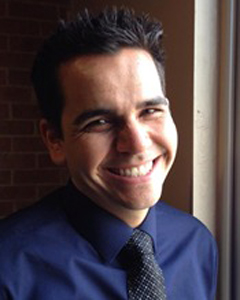Program Information
Phantom Measurement of Surface and Organ Dose Using Optically Stimulated Luminescence Detectors in Diagnostic Radiology
M Rodriguez1*, E Yukihara2, S Ahmad3, C Ruan3, (1) Landauer Medical Physics , Glenwood, IL, (2) Oklahoma State University, Stillwater, OK, (3) Oklahoma Univ. Health Science Ctr., Oklahoma City, OK
TU-A-116-1 Tuesday 8:00AM - 9:55AM Room: 116Purpose: To measure the organ and surface dose in a phantom using aluminum oxide doped with carbon (Al₂O₃:C) and beryllium oxide (BeO) optically stimulated luminescence (OSL) detectors for the purpose of evaluating patient organ dose in diagnostic radiology procedures.
Methods: The Al₂O₃:C detectors used in this study were cut from Luxel™ tape into 4 mm diameter circles of thickness 0.3 mm. The BeO detectors used in this study were ~4.7 mm x ~4.7 mm x 0.5 mm chips. The liver dose was measured by placing detectors into the custom-made detector holders and placing the holders in the 19 locations corresponding to the liver in an anthropomorphic phantom (RANDO). Each measurement was repeated three times. An AP abdomen protocol with AEC was used to determine the technical parameters for the exam. After irradiations, the BeO signal was read using a Riso TL/OSL-DA-15 automated reader and the Al₂O₃:C signal was read using a custom-built light emitting diode (LED)-based reader system. The results were compared to those obtained from LiF:Mg,Ti thermoluminescence detectors (TLD).
Results: The liver dose measured by BeO and Al₂O₃:C for a standard AP abdomen exam was found to be 208 and 222 μGy, respectively. The surface dose measured by BeO and Al₂O₃:C exam was both found to be 540 μGy. For comparison, the TLDs measured an organ and surface dose of 257 and 630 μGy, respectively.
Conclusion: The proposed method of using BeO and Al₂O₃:C OSL detectors to measure organ and surface dose in an anthropomorphic phantom yielded comparable results to that of TLDs and shows improved reproducibility of the measurements when compared to TLDs. Given the flexibility and accuracy of OSL detectors for various readout techniques, OSL detectors have a great potential to allow for clinical organ dose measurement of diagnostic x-ray exams.
Contact Email:


